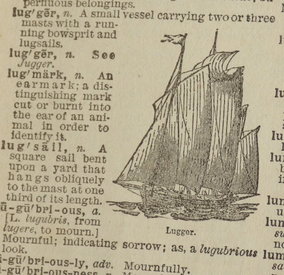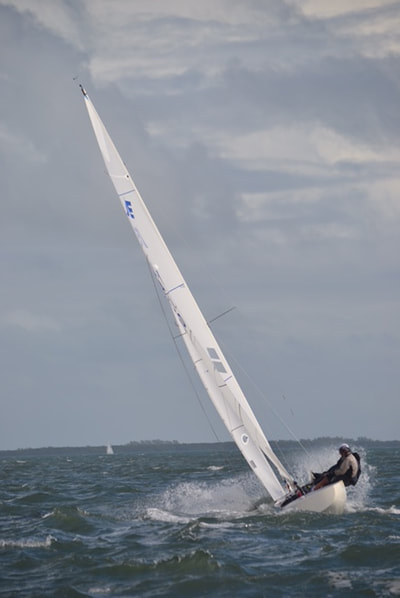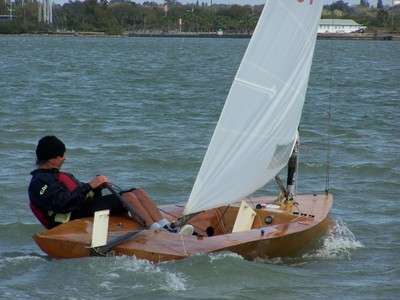Which explains, for instance, why cobbles from San Diego ended up in Boston, while rocks from Kurraba Point near Sydney, Australia floated all the way to Cornwall. Tampa has a its own Ballast Point Park (formerly Jules Verne Park –– which is kind of cooler, no? –– after Verne's use of Tampa as the launch of his fictional From the Earth to the Moon). It's a good place NOT to run aground. Back on track, fast forward to modern racing skiffs. Instead of rocks, we see sailors leaning out from the side of the boat (confusingly called "hiking" since the people are generally sitting down) or suspended even farther from the center of effort by a wire.
<insert sound of tom-kick-crash: Ba-Bum-Tishhhhhh.> Instead of me trying to write my way through how the OH2 works, here's a quick videoclip my sister Sarah Ellen Smith took of it. It fills 30 or so gallons in five minutes of pumping (that's a sizable chunk of rail-meat that doesn't squawk or drink beer). The tank empties in about 45 seconds. The weather has not permitted a heavy-air test, but the addition of a few gallons made a big difference in stability, especially when the boat is being rowed. T-minus two weeks and a couple of days until the hundred+ craft launch from Fort DeSoto Beach. Here's a stirring bagpipes-enlivened video of that moment. Listen for the guy who shouts, "Freedom!" at the 2-minute mark or so. I don't know who it is, but we love his spirit.
4 Comments
Eddie Mack
2/12/2018 08:24:21 pm
Coastie (Eddie Mack) sailing with ClamCounter on the Hobie Getaway catamaran “Miss Marie” always yells “Freedom” at the start of the Everglades Challenge. They have completed the past 5 ECs. Great ballast article! Miss Marie not as fast, nor as talented:) See you on the beach.
Reply
Amy
2/13/2018 03:03:19 pm
Thanks Eddie!
Reply
Goldie
2/19/2018 03:39:21 pm
Nice video.
Reply
Amy
2/21/2018 03:19:02 pm
Thanks –– I can't take credit except for finding it on YouTube.
Reply
Leave a Reply. |
About the Blog
A lot of ground gets covered on this blog -- from sailboat racing to book suggestions to plain old piffle. FollowTrying to keep track? Follow me on Facebook or Twitter or if you use an aggregator, click the RSS option below.
Old school? Sign up for the newsletter and I'll shoot you a short e-mail when there's something new.
Archives
June 2024
Categories
All
|





 RSS Feed
RSS Feed
